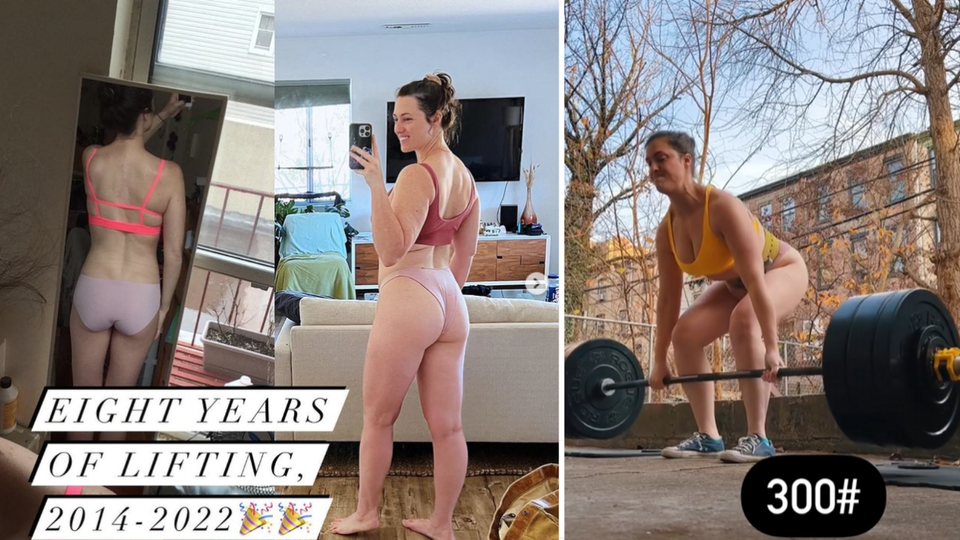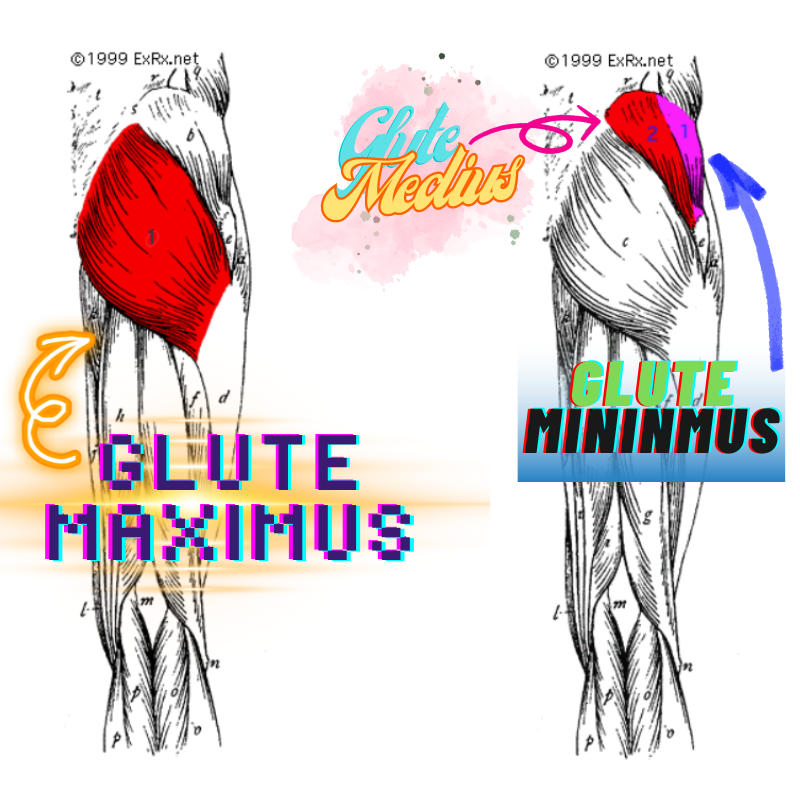The Last Article on "Activating/Engaging" Your Glutes You Will Hopefully Ever Have to Read, Amen

ASK A SWOLE WOMAN
This is the paid Sunday Ask A Swole Woman edition ofShe’s a Beast, a newsletter about being strong mentally/emotionally/physically.
The Question
Hi Casey,
Big fan of you and your newsletter. I've been struggling with something for...years?…and finally realized I should ask you if there's an answer/solution.
I've been dabbling in squats and deadlifts for about five years—started off doing longer sets of lighter weights but for about a year I've been working on building strength and pushing into higher weights with the RISE Lite program. But the thing is that I have a lot of trouble actually using my glutes. When people say to like root your feet into the ground, I kind of can't do that? I often find that at the top of my deadlift, I think I'm squeezing my glutes but then I realize I'm actually squeezing my legs and knees? I'm not even sure that makes sense. But it does result in me having a very hard time building my glutes and also progressing much in weight with those exercises. Sometimes during deadlifts I feel like I'm doing work but I can also tell that I'm just not doing that work with my glutes at all. Do I need to go way lighter in weights until I can get the squeezing right? Or do I need to go even heavier? I would love your help if I'm helpable haha. Thank you!! -Chelsea
The Answer
Oh boy. The glute—for many of us, she is a cunning and wily beast.
I’ll tell you some things I’ve learned in my decade spent in deep and careful weight-lifting study.
I say this without judgment for myself: I once had virtual Hank Hill teacup butt. Just less than nothing going on back there, functionally or otherwise. And in my defense, that was the style! Again, no judgment, but recently I found myself watching several old episodes of Laguna Beach, and the pants we girls had to wear, the way they are literally concave from the (very low) waist to the leg, leaving no room for even one, let alone two cheeks: The mind reels.
In the name of the alleged return of low-rise pants, I’ve since tried shimmying my current pants down my body to where I think my pants used to sit in the heyday of the mid-2000s. And when you actually have developed butt cheeks, I’m proud to say you would not believe a) how high up they start on your body when there's some muscle there, and b) how much of them would hang all the way out of a low-rise pant, never mind a low-rise pant with zero butt room.
Anyway, where was I—
There are some people whose glutes are just always on. They probably always had a decent butt, but lifting heavy weights turned its kindled flame into a bonfire. They are probably really good at deadlifts. And they probably make a lot of money selling glute programs and what have you. Most of these glute “haves” don’t know the true meaning of struggle when it comes to glute activation and cultivation, because they’ve always had participatory glutes. When asked how they got their glorious glutes, they just kind of throw glute-ish accessories willy-nilly at the wall, or say things like, “just do more squats!” and “yeah, sure, trap-bar deadlifts and barbell deadlifts are basically the same!”
And then there are the people like me, whose glutes were so inactive, so quiet, so unwilling to join the rest of the class to participate, that for a long time I could not be reasonably convinced they were even there. My lower back muscles did all of their work, and did a terrible job, because compared to the mighty glute, the back erectors and QLs and are but small. But if I wanted to pick things up and my glutes refused to participate, my body had no other options to rely on.
How I learned to stop deadlifting entirely with my lower back, part one, which some say was not that helpful, but maybe will make sense with part two, below, and part three, way below, and also the rest of this article
How I learned to stop deadlifting entirely with my lower back, part two. I think I can explain it like this: Hold your hands at your sides, palms facing in. Point your thumbs down so your fingers point backward. Grab your butt cheeks. Your finger placement is roughly the direction your glute fibers run. By sort of pressing hips outward (while hinging), you are engaging those fibers along the direction they lengthen and contract, which is the way to optimally engage them!
Many of my fellow glute “have-nots” are completely glute-atheistic. To them, the glute is not dead; the glute never was. They believe things like “deadlifts are a lower-back exercise,” “cat back is a valid deadlifting style,”[^1] “ass-to-grass squats are superior and bouncing off of your calves is the best way to get out of the hole,” and so forth.
The real lesson here is that glute scholarship online often suffers from these two groups—the haves and the have-nots—talking past one another. Rarely do you get anyone who makes the transition from one camp to the other, who caulks the glute wagon and fords the activation river. But reader: I am that brave soul. And I am here to help.
What this means is that, in order to get my glutes to work, I did not have the easy path of the first group of people, the robust glute-havers. I had to scratch and claw, hand over fist to get my glutes to work. Every shred of muscle in my butt is the result of hard-won victory.
You name the glute accessory or activation movement, I’ve tried it. X-band walks, monster walks, alternating mini-band walks, clamshells, fire hydrants, abductions, adductions, kickbacks, pause squats, sumo squats, goblet squats, hip thrusts, single-leg hip thrusts, hip thrust machines, quadruped hip rotations, glute bridges, barbell glute bridges, stiff leg deadlifts, deficit deadlifts, Romanian deadlifts, rack pulls, split squats, deficit split squats, lunges, deficit lunges, reverse lunges. I’ve forgotten more than most people know about glute movements.
Now, I don’t mean to make it sound incredibly difficult, even though I just did. You are about to benefit from a more streamlined version of what I had to do, as a result of my years of trial and error.[^2] All this is going to take is knowing what to do and then doing it in the same way that all lifting requires: as a steady, measured, deliberate practice.
I’m glad to hear you are in what sounds like a good place for starting this kind of inquiry.[^3] I wouldn’t recommend someone dive in to this kind of thing before giving strength building with the basic movements a good fair shake first, and understanding progression and how to eat. But after doing that for a while, we all start to run up against challenges and have weaknesses and strengths. You have demonstrated patience and fortitude already through your curiosity about pursuing that more-perfect deadlift, and I aim to reward it!
Everything following here is in order of priority. First, you must attend to your glute max. Then, you must attend to your isolateral leg/hip movements that will help all your glutes on each respective sides work together. Then after that, if you feel like it, you can do activation/isolation movements.

The three glute muscles, one of which everyone ignores
There is one thing that I see most alleged glute experts on Al Gore’s internet avoiding, ignoring, or just plain not knowing.
